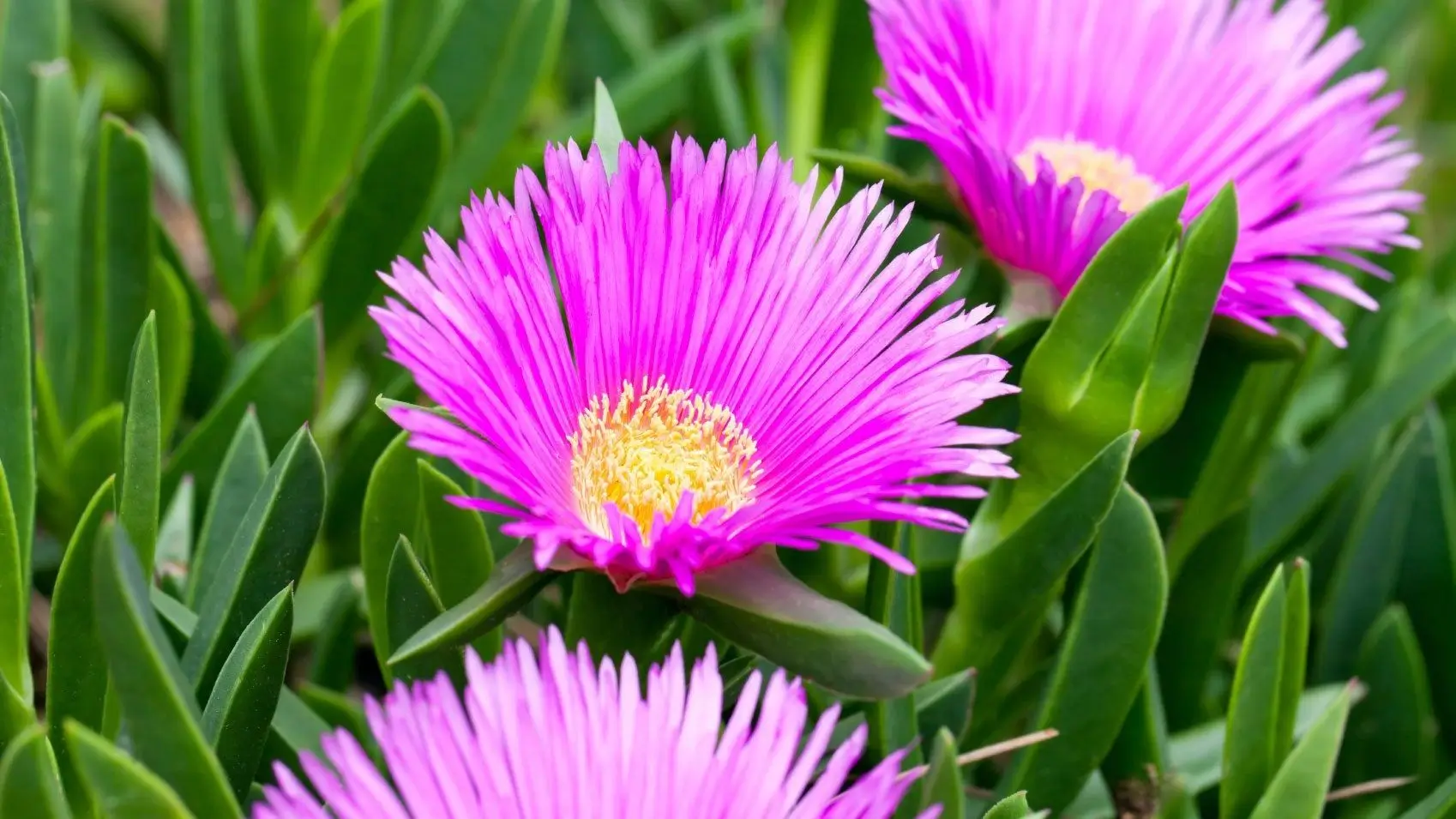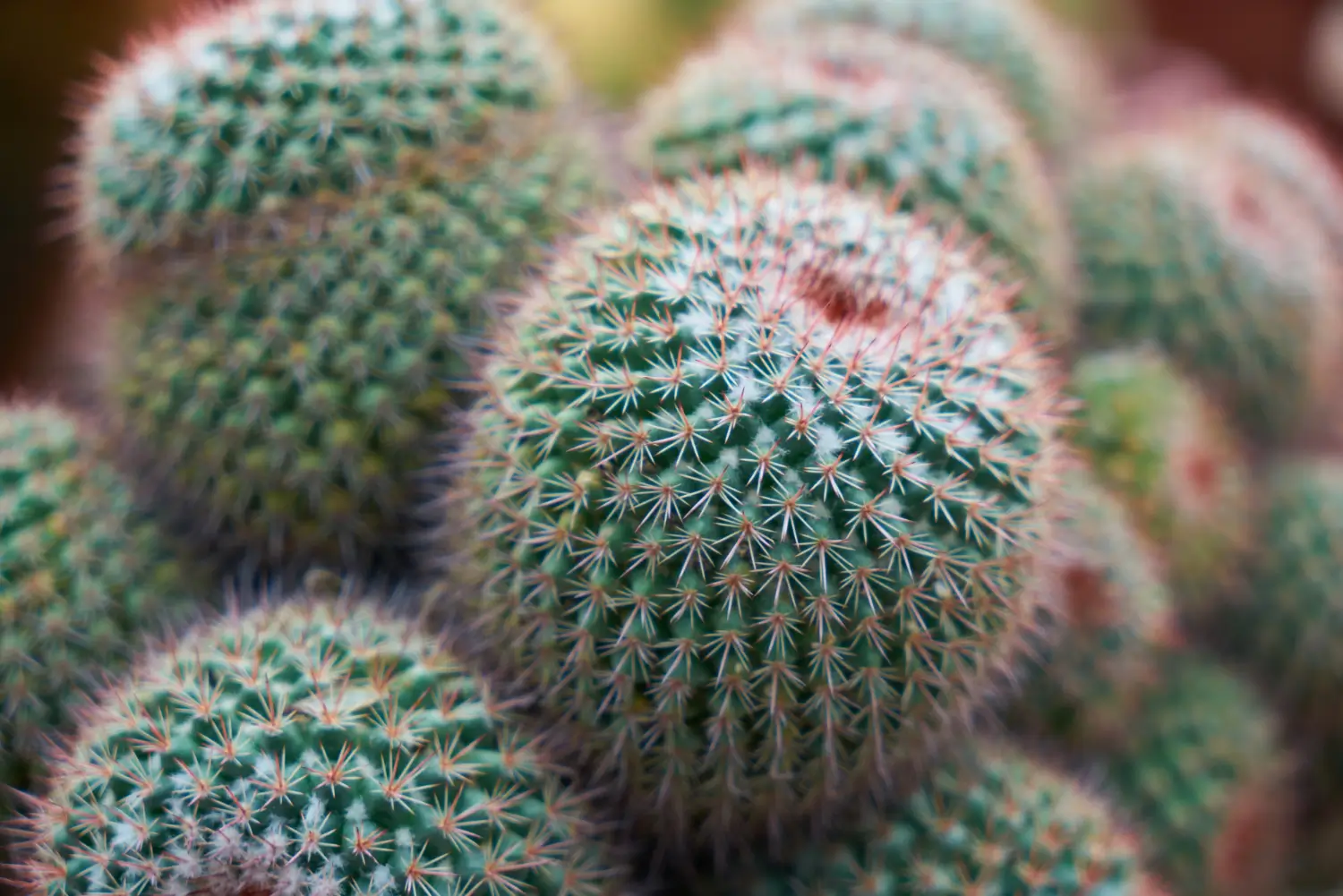
Soil Health & Fertilization
We unite suppliers and green industry professionals worldwide
The ice plant (Delosperma) is an eye-catching low-maintenance perennial with bright daisy-like flowers and succulent leaves
By Victor Miller
|Published on June 11, 2025


The ice plant (Delosperma) is an eye-catching low-maintenance perennial with bright daisy-like flowers and succulent leaves. Its name derives from the tiny, sparkling hairs on its leaves, which act as micro-reflectors of sunlight and give the plant a frosted, ice-like appearance. Such robust plants are a godsend to gardeners looking for drought-tolerant and heat-loving easy-care additions to their landscape.
Originating from South Africa, the Ice Plant does well in hot, dry climates and is often used as a ground cover, a plant in rock gardens, or planted as a border. Its extended flowering time from late spring to fall ensures a long-lasting burst of color for any garden in shades of pink, purple, orange, yellow and red, creating a dazzling carpet of flowers.
| Botanical Name | Delosperma |
| Common Name | Ice Plant |
| Maturity Size | 6 to 18 inches tall, 1 to 10 feet wide |
| Light Needs | Full sun |
| Soil | Well-draining, sandy or rocky soil |
| Watering Needs | Low; drought-resilient once established |
| Hardiness Zones | 5-11 (depending on variety) |
| Bloom Period | Late spring to fall |
| Flowers Color | Pink, purple, red, orange, yellow, white |
| Growth Rate | Fast-spreading |

September 25, 2025
9 minute read
September 24, 2025
9 minute read
September 23, 2025
10 minute read
September 22, 2025
9 minute read


Join as a seller and connect with thousands of B2B buyers nationwide!
Sign Up

African Spear Plant
The African Spear Plant (Sansevieria cylindrica), also known as cylindrical snake plant or spear sansevieria, is a hardy, architectural succulent native to Angola.

Ball Cactus
The Ball Cactus (Parodia magnifica and related species in the Notocactus group) earns its name from its globe-like form and neatly spaced ribs, giving it the appearance of a botanical sculpture

Balloon Flower
The Balloon Flower (Platycodon grandiflorus) is an easily grown perennial that presents its balloon-like buds, which erupt into 5 petaled star shaped flowers

Baltic Blue Pothos
Baltic Blue Pothos (Epipremnum pinnatum ‘Baltic Blue’) is a dramatic variety named for its deep bluish-green leaves, which striking natural splits appear as they grow and evolve
Once established, Ice Plants are some of the lowest-maintenance perennials you can grow, needing very little care. They thrive in hot, sunny environments and will grow best in dry, well-draining soil.
For fullest blooms, Ice Plants should be planted in full sun, where it gets a minimum of six hours of direct sun daily. They don’t do well in shade, where they might bloom less or become leggy.
Ice Plants use very little water once they are established. In many climates, they can live on rainfall alone but appreciate periodic deep watering during extended dry periods. Water sparingly, as they do not like their roots to be soggy so allow the soil to dry thoroughly between waterings to avoid root rot.
Occasional pruning might be needed to keep Ice Plants looking their best. Once that main bloom period is done, remove spent flowers and any long, leggy growth to promote a second round of flowers. If the plant becomes too dense or starts to spread beyond its intended area, thinning it out will help improve airflow and prevent disease.
A light trim at the end of the growing season can help to keep the plant tidy — but don’t cut it back too heavily before winter, particularly in colder zones, since it may not bounce back well in the spring.
The Ice Plant can be propagated easily by division or stem cuttings.
Ice Plants do well in containers, making them a great option for patio, balcony, and small garden space plantings. Use a free-draining potting mix that is made for succulents or cacti, and pot into a container with drainage holes to avoid water pooling at the bottom.
Put pot in full sun, water little and allow soil to dry between waterings. If you live in a cold climate, you can always bring potted Ice Plants inside for the winter to protect them from frost.
Some Ice Plants are cold-hardy while others must be protected from freezing temperatures. In colder zones, apply a layer of mulch around the base of the plant to insulate the roots. If you’re growing in a pot, try bringing it indoors or to a sheltered spot for winter.
In colder areas, Ice Plants die back in winter and reemerge in spring. Such plants can be reseeded as annuals if they fail to survive the winter, providing seasonal color.
Ice Plants are covered with loads of bright daisy-like flowers that will open in full sun but close at night or on cloudy days. Their long blooming time stretches from late spring through fall, with waves of color that entice bees, butterflies and other pollinators.
Regular deadheading spent flowers is recommended to promote continual blooms. Give it well-draining soil and full sun, and it becomes a healthy plant that blooms profusely in the warm months.
Ice Plants are mostly pest and disease free but can run into a few issues:
For gardeners looking for a low-maintenance, drought-tolerant, show-stopping plant for their landscape, the Ice Plant makes is an exceptional option. Whether tumbling over a rock wall, filling in a border in the garden or brightening a container, this sun-loving plant pays off with months of colorful flowers for minimal care. In the right conditions, it will thrive year after year, showing that beauty doesn’t have to come with high maintenance.
Some varieties are cold-hardy to USDA Zone 5; others prefer warm climates. In cold regions, mulch for winter protection, or grow Ice Plants in pots that can be brought indoors.
They do not require heavy feeding. A light spring application of balanced, low-nitrogen fertilizer can spur healthy growth and flowering. Do not over fertilize, as this can result in excessive leaves with few blooms.
Ice Plants grow rapidly and can spread over two feet in one season, which is another reason why they are a great option for ground cover.
The number one reason is poor sunlight. Make sure the plant gets at least six hours of direct sunlight each day. Overwatering or overly rich soil can also inhibit flowering, since these plants prefer lean, dry conditions.

Soil Health & Fertilization
Victor Miller

Pest Identification & Prevention
Victor Miller

Lawn Care Tips & Maintenance
Victor Miller

Soil Health & Fertilization
Victor Miller

Smart Irrigation Systems
Victor Miller

Patios, Walkways & Driveways
Victor Miller

Soil Health & Fertilization
Victor Miller

Pest Identification & Prevention
Victor Miller
My Account
Our team is always here to help.
We are open Monday - Friday, 9:00 AM to 4:30 PM PST.